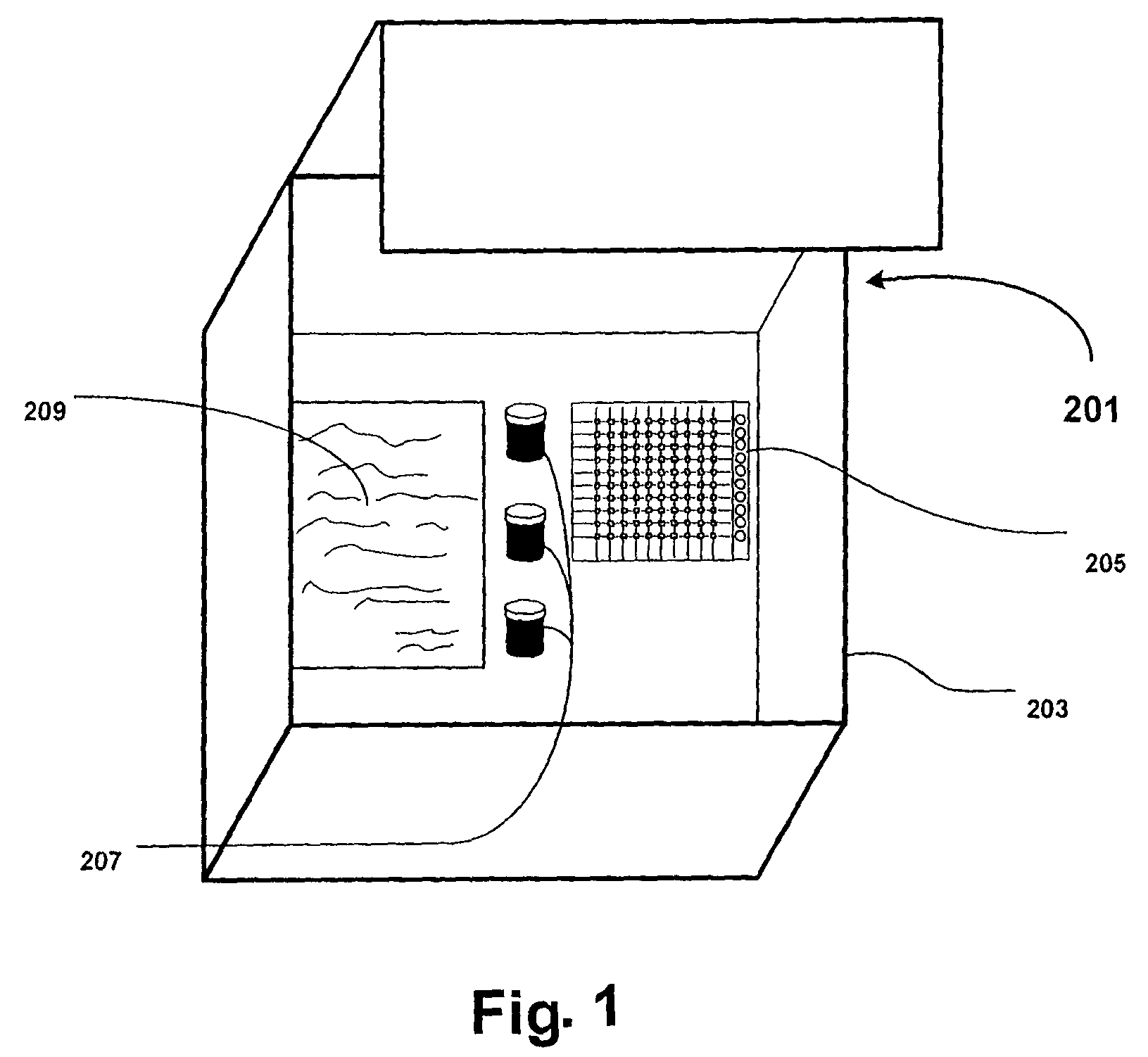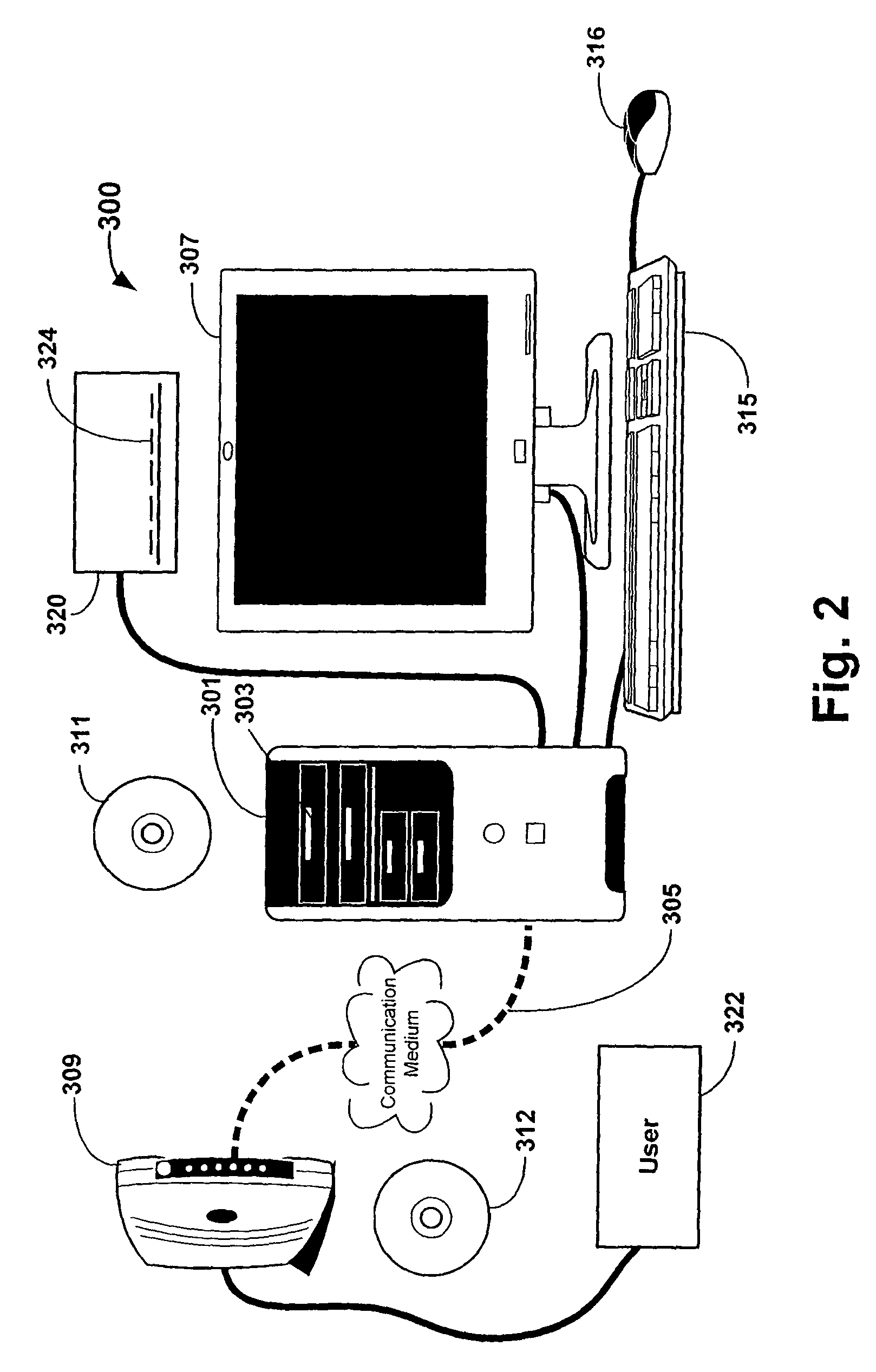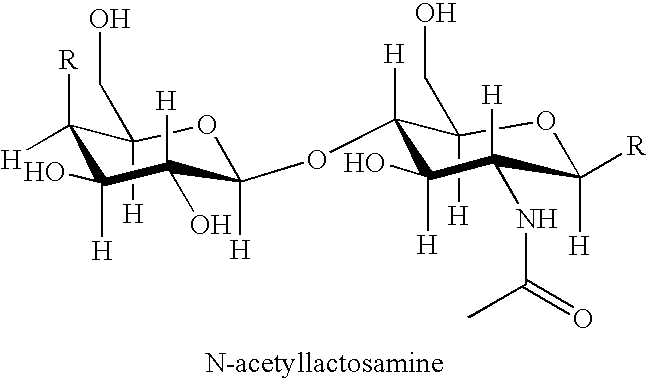Methods, assays and kits for cancer diagnosis and screening utilizing glycan-binding and glycan epitopes
a technology of glycan epitopes and assays, applied in the field of methods, assays and kits for cancer diagnosis and screening utilizing glycan binding and glycan epitopes, can solve the problems of inability to fully understand the structure of glycan microarrays, lack of well-defined glycan libraries and analytical methods, and inability to accurately predict the effect of cancer, etc., to facilitate the development of therapeutic agents and improve the quality of diagnostic methodologies
- Summary
- Abstract
- Description
- Claims
- Application Information
AI Technical Summary
Benefits of technology
Problems solved by technology
Method used
Image
Examples
example 1
Neoplasia Related Glycan Signatures
[0226]A glycan array has been utilized to identify anti-glycan autoantibody signatures which comprise a glycan marker or a plurality of glycan markers that can constitute a signature of a neoplasia or cancer. A glycan array can be of the type described in PCT / US2005 / 007370 filed Mar. 7, 2005 titled “High Throughput Glycan Microarrays”, U.S. Provisional Patent Application No. 60 / 629,666 filed Nov. 19, 2004 titled “Development of Blood Based Test Allowing Diagnosis of Neoplasia Status”, and U.S. Provisional Ser. No. 60 / 550,667, filed Mar. 5, 2004, and U.S. Provisional Ser. No. 60 / 558,598, filed Mar. 31, 2004.
[0227]In the field of lung cancer, an exemplary test evaluated a total of 49 patients with a history of smoking and compared the anti-glycan autoantibody profiles with that of a total of 41 adenocarcinoma patients. Adenocarcinoma of the lung is the most common type of lung cancer, and accounts for over 30% of all cases of lung cancer. Such adenoc...
PUM
| Property | Measurement | Unit |
|---|---|---|
| area | aaaaa | aaaaa |
| area | aaaaa | aaaaa |
| area | aaaaa | aaaaa |
Abstract
Description
Claims
Application Information
 Login to View More
Login to View More - R&D
- Intellectual Property
- Life Sciences
- Materials
- Tech Scout
- Unparalleled Data Quality
- Higher Quality Content
- 60% Fewer Hallucinations
Browse by: Latest US Patents, China's latest patents, Technical Efficacy Thesaurus, Application Domain, Technology Topic, Popular Technical Reports.
© 2025 PatSnap. All rights reserved.Legal|Privacy policy|Modern Slavery Act Transparency Statement|Sitemap|About US| Contact US: help@patsnap.com



